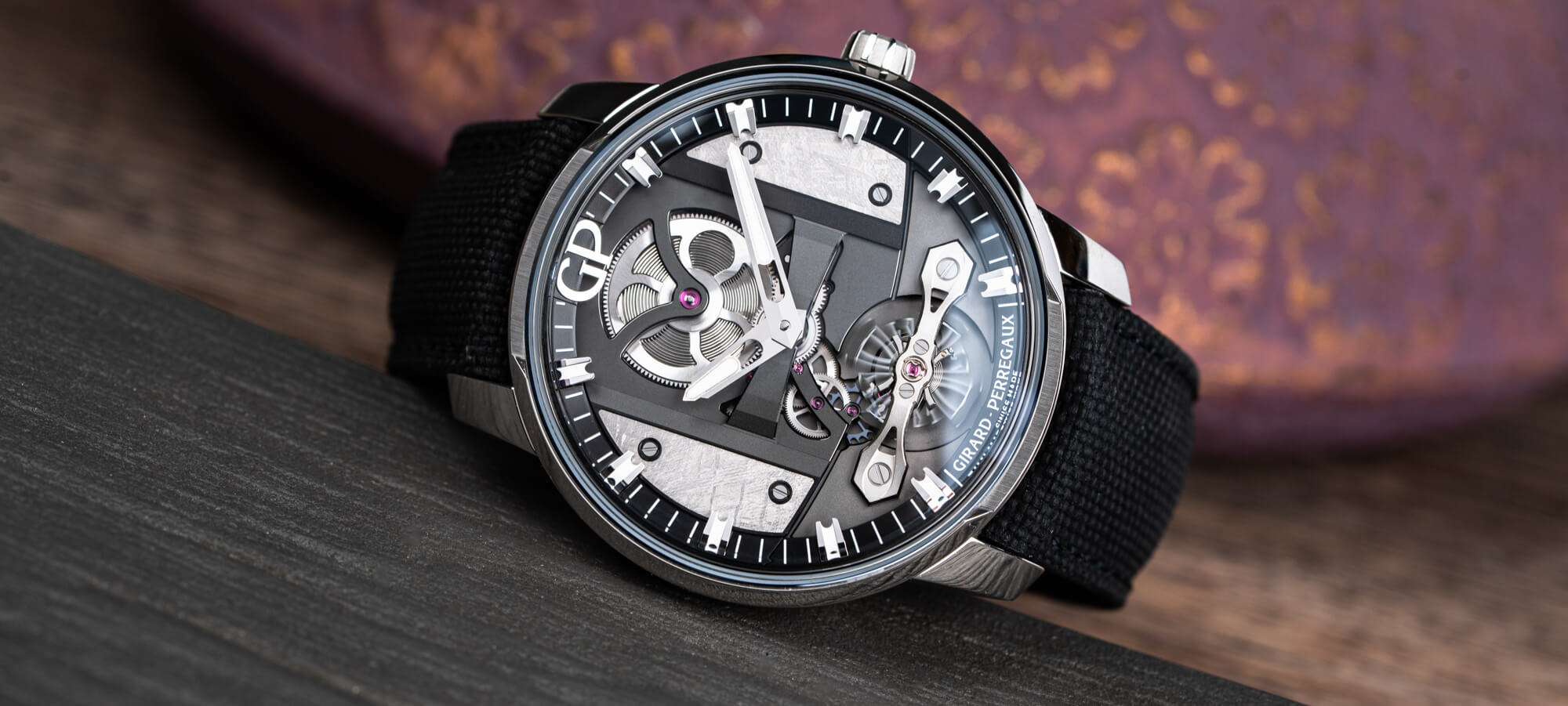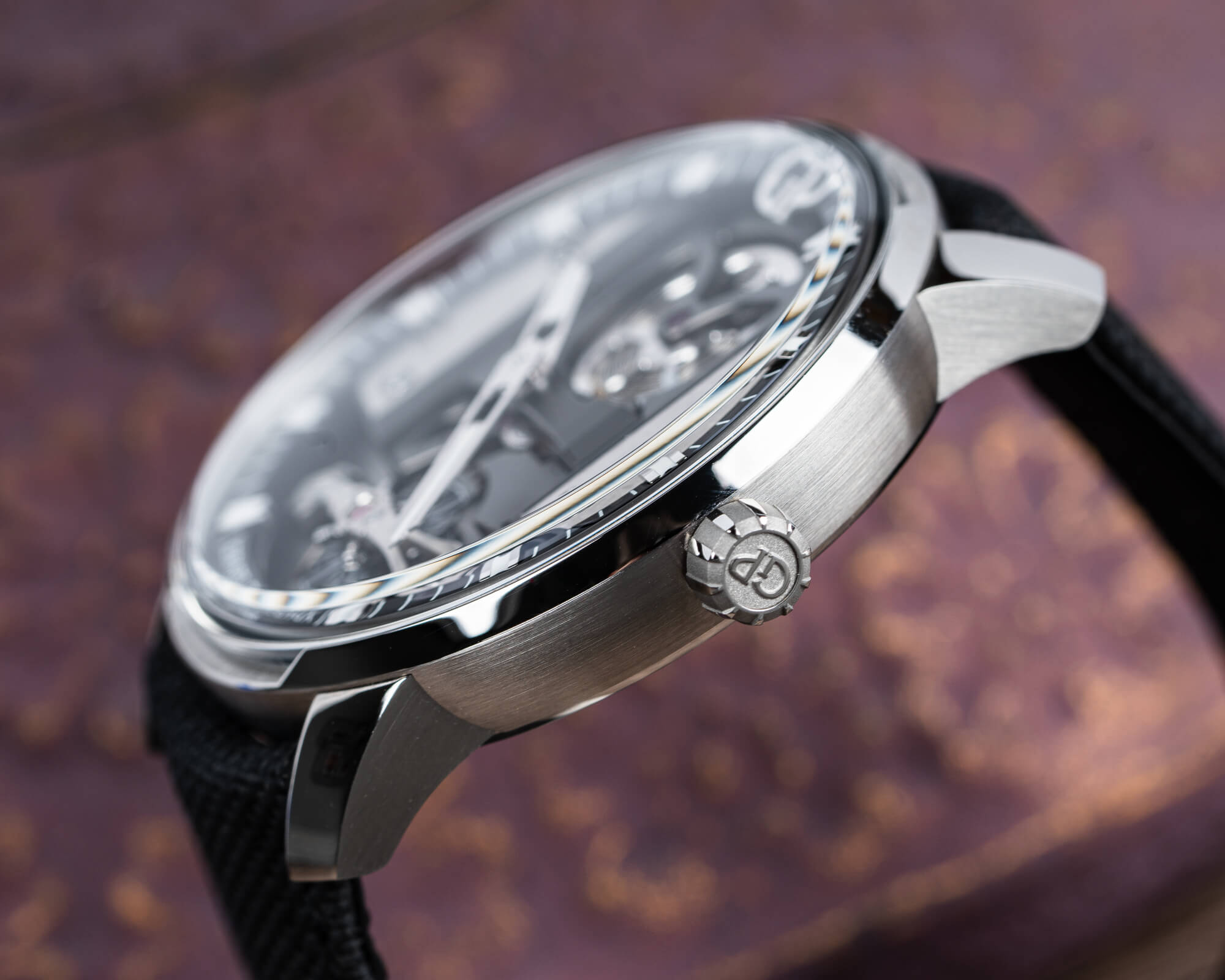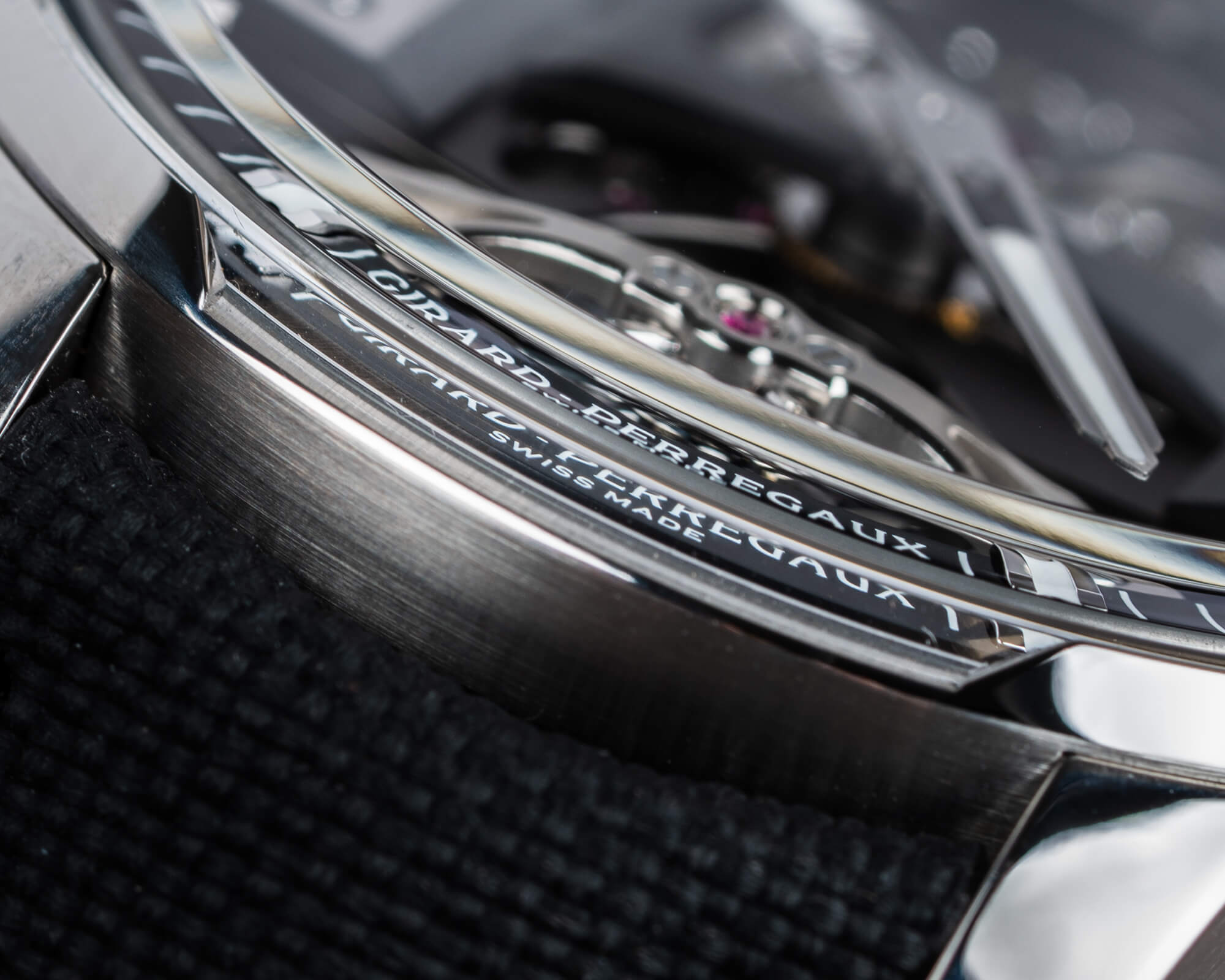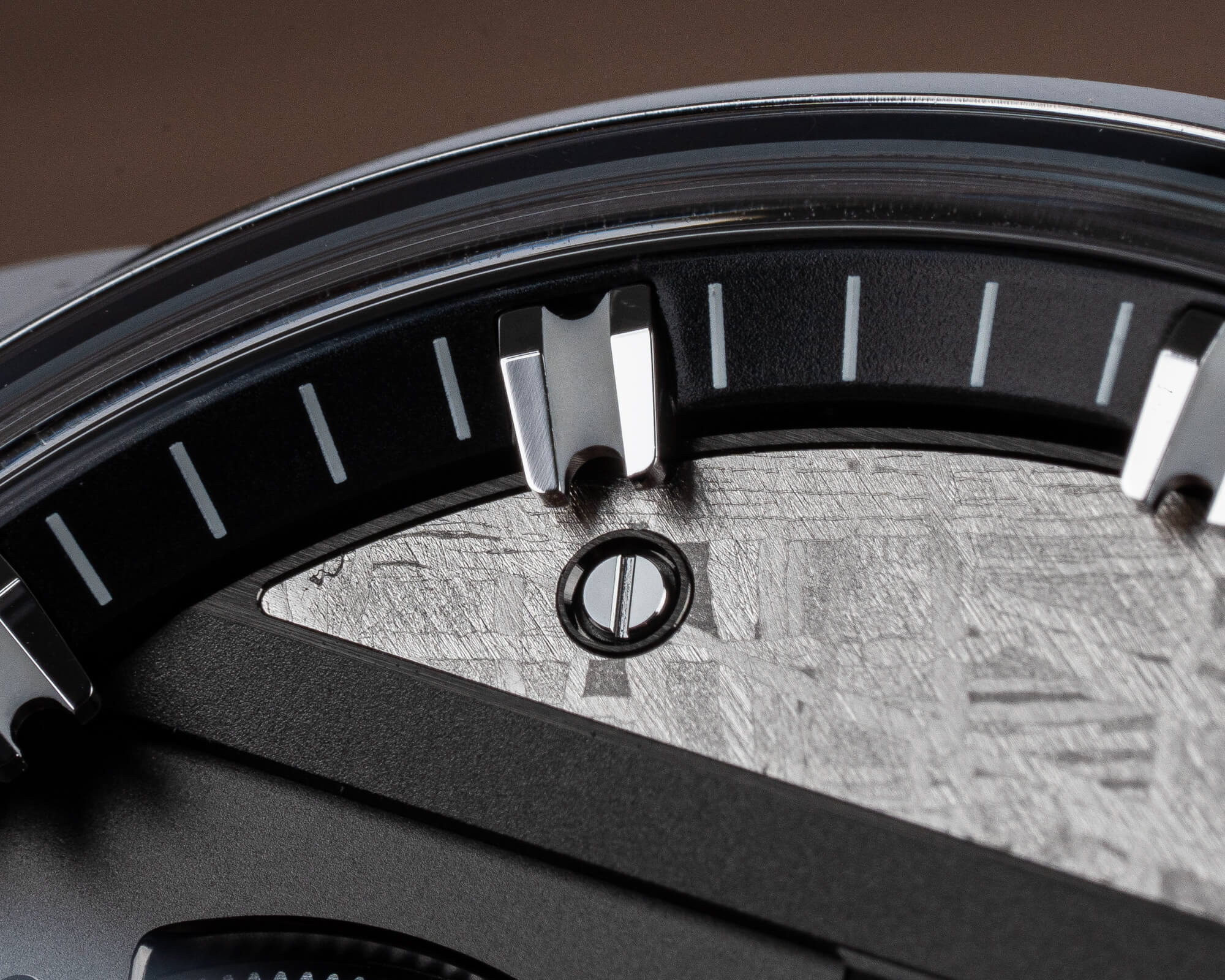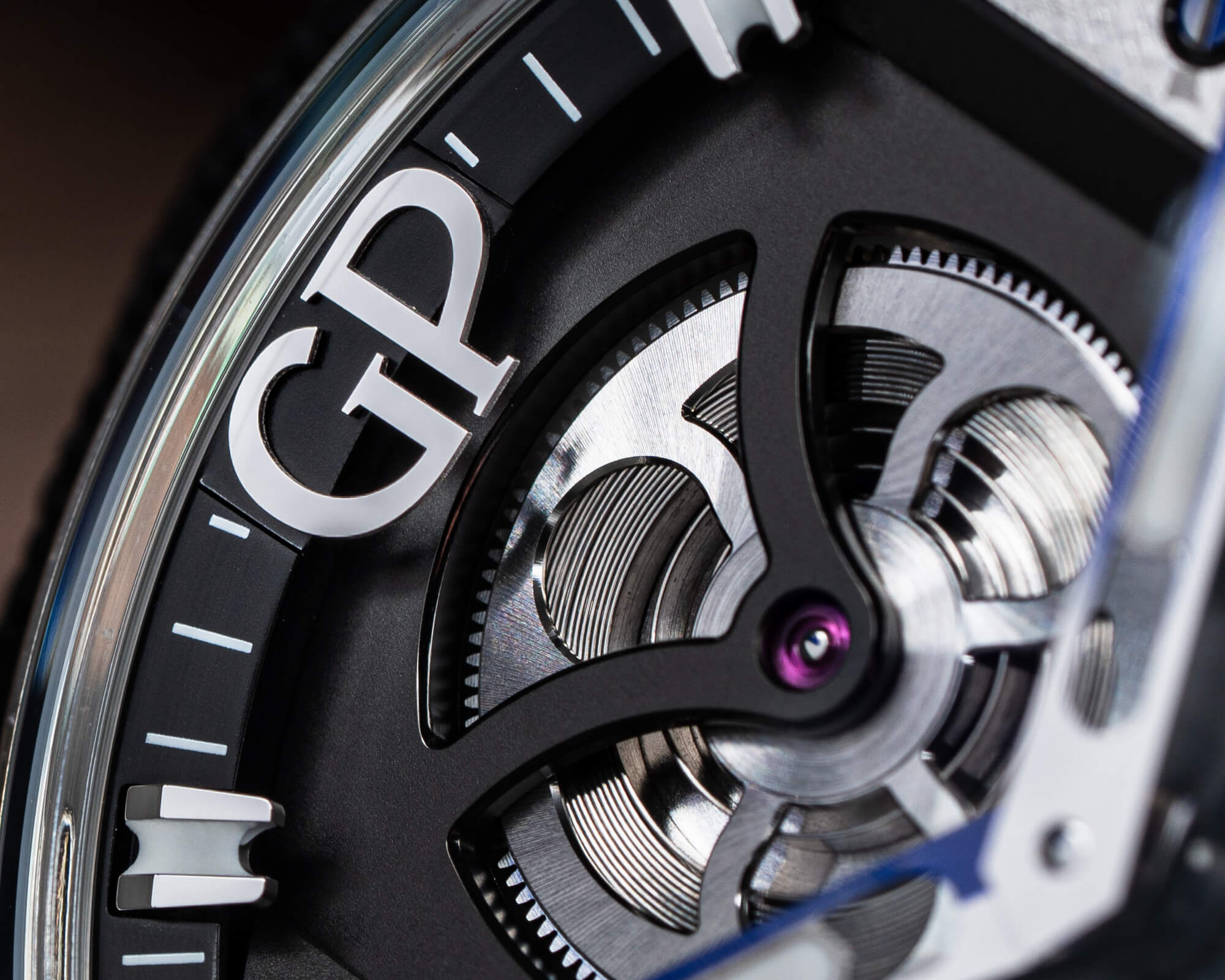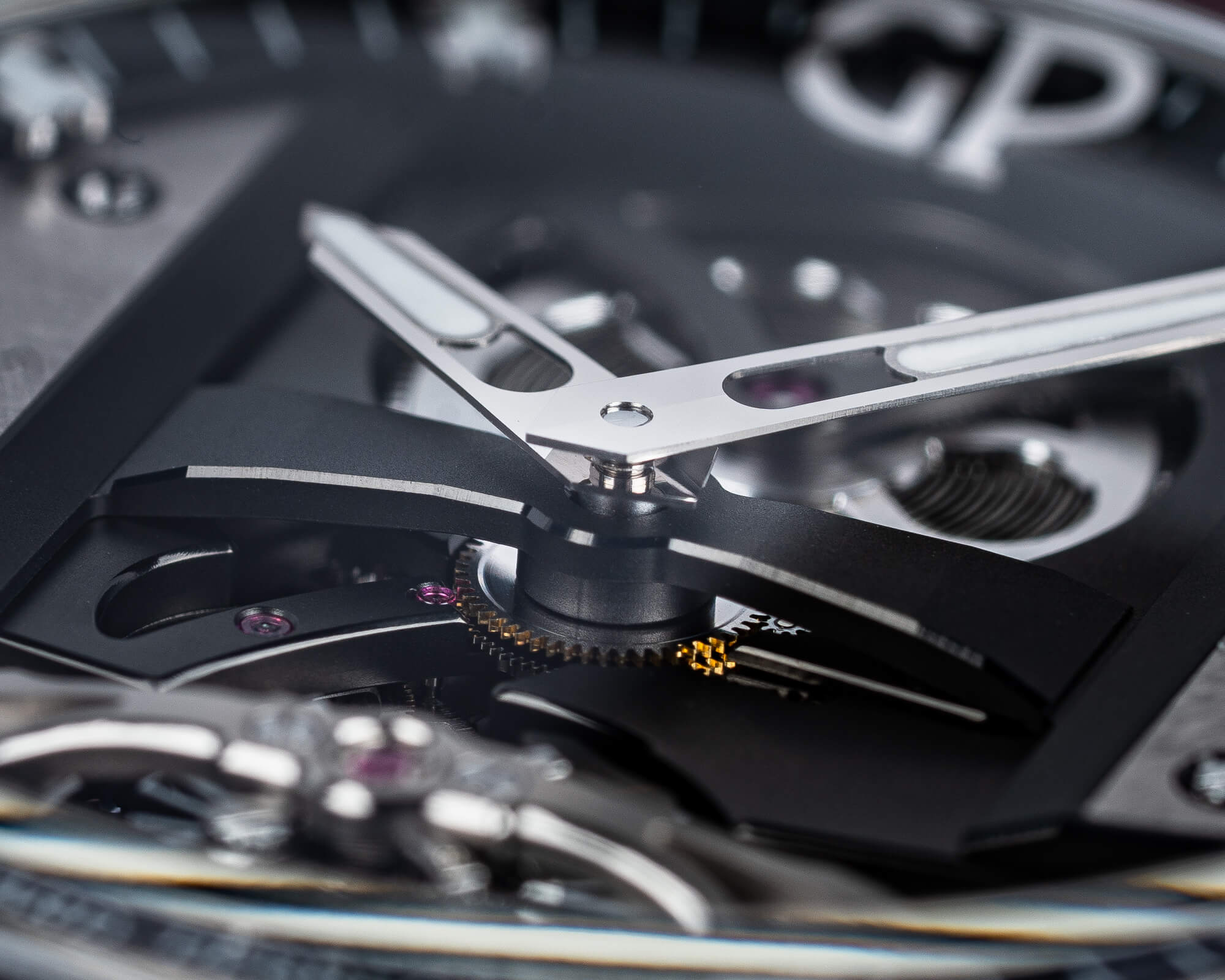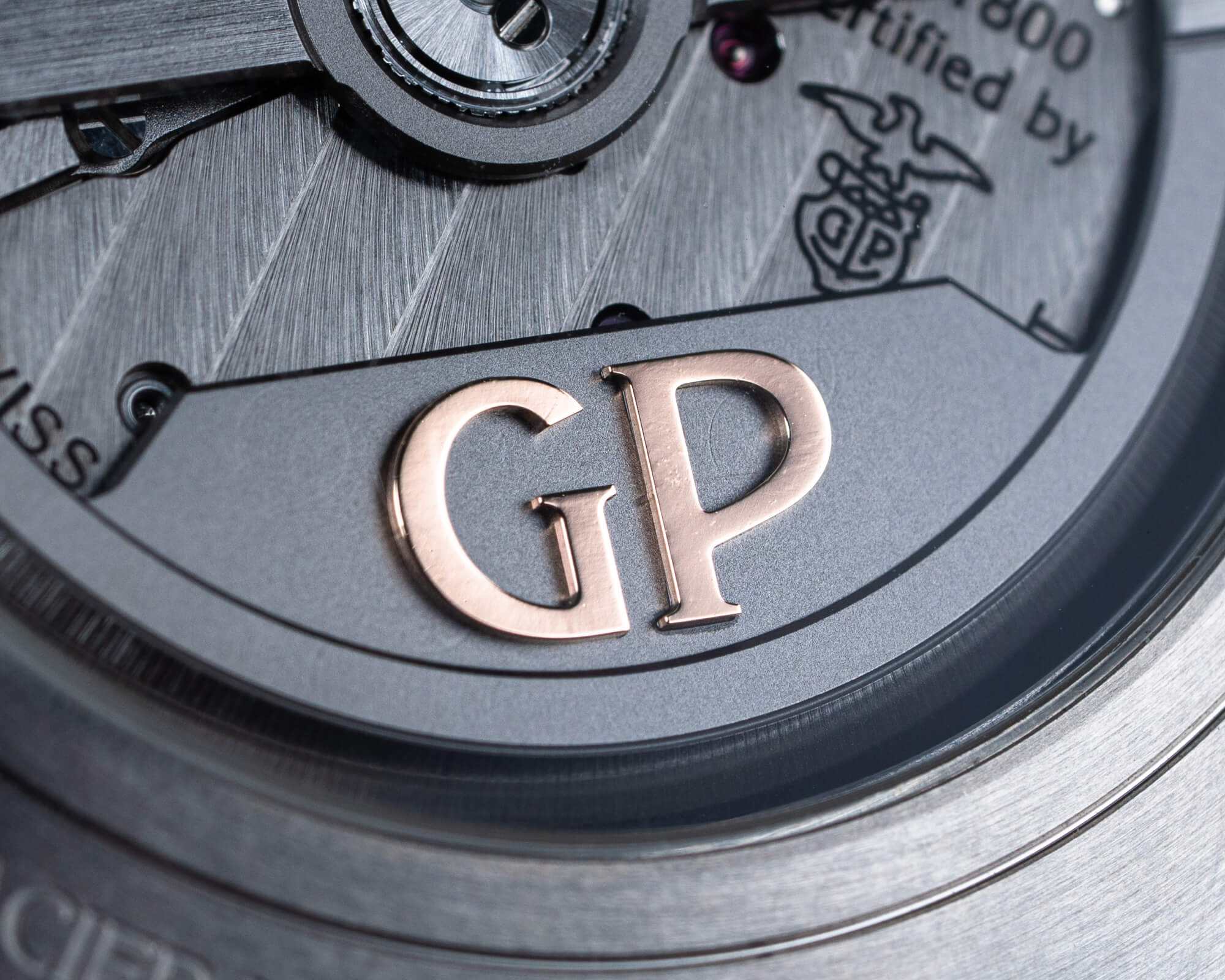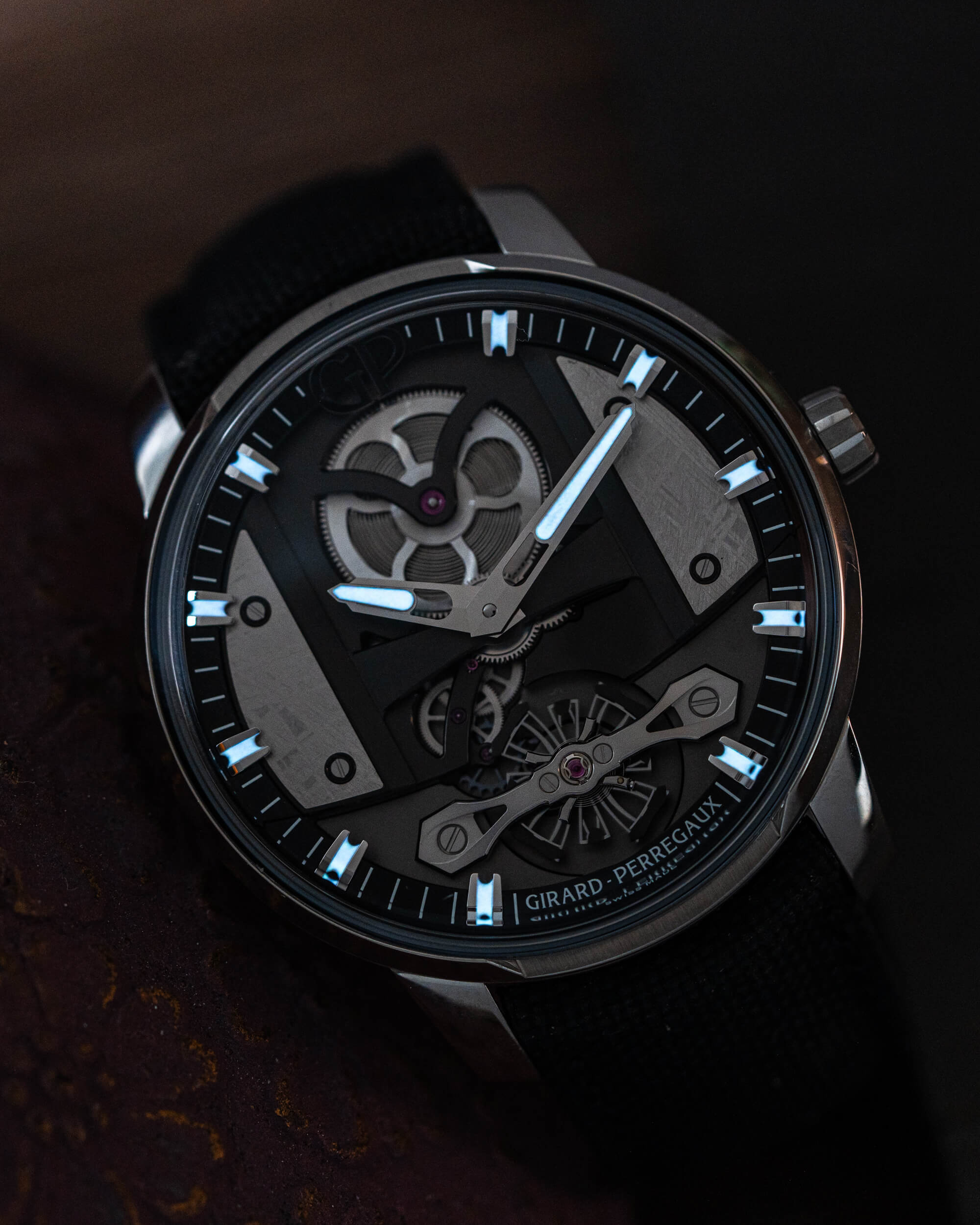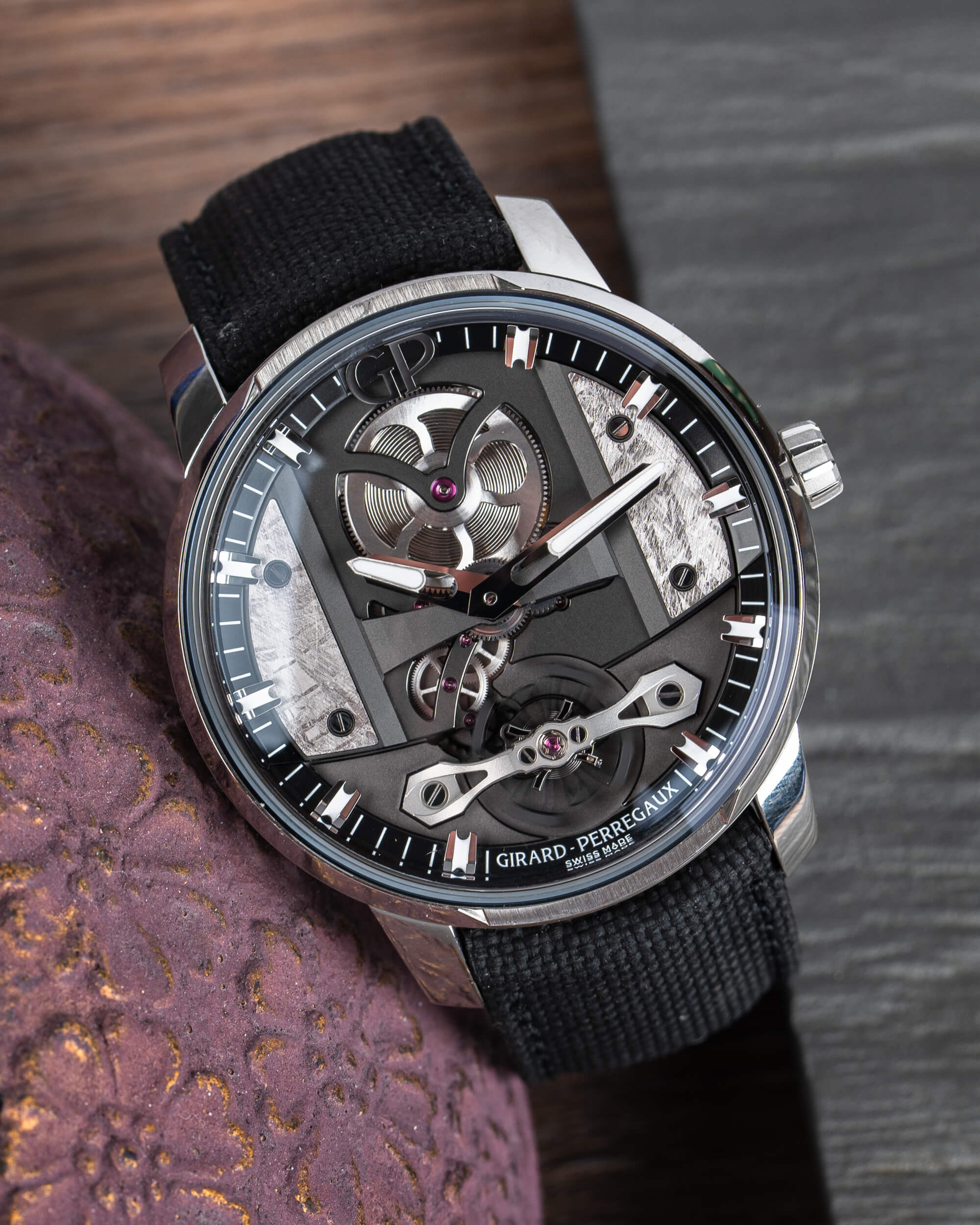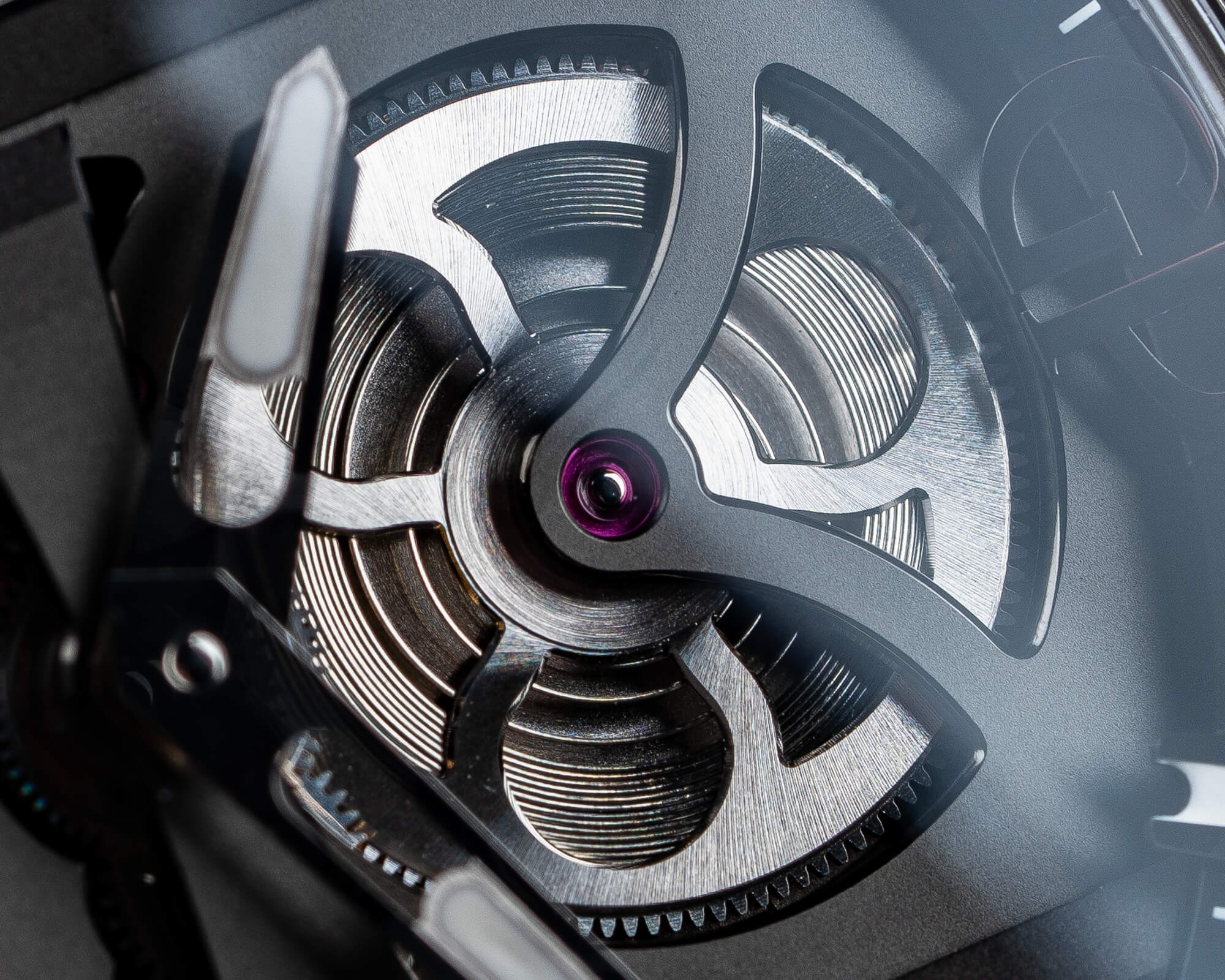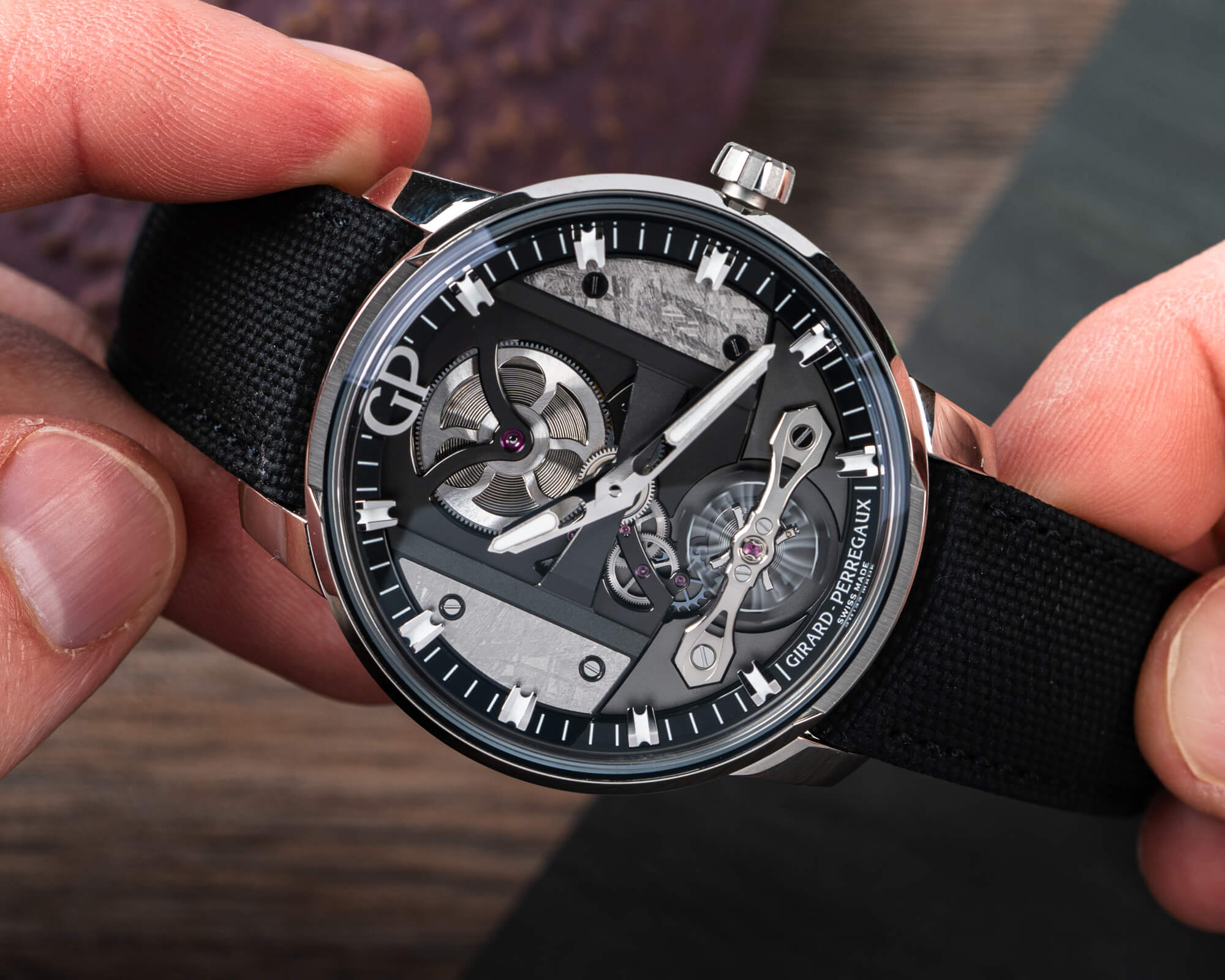
I don’t know if I’ve ever taken so many pictures of a single watch. I’ve recently developed a love of and fascination with watches that put their inner workings on display, and Girard-Perregaux strikes a chord with many of its watches. The brand’s various Bridges collections all captivate the eye with their movement-as-dial designs and are a dangerous combination for a watch lover with a nice camera. The Girard-Perregaux Free Bridge Meteorite isn’t entirely new but instead builds on the previous Free Bridge models with the somewhat subtle addition of two meteorite elements. Despite only being a small change, the slices make a visual difference on a watch that has already managed to mesmerize.
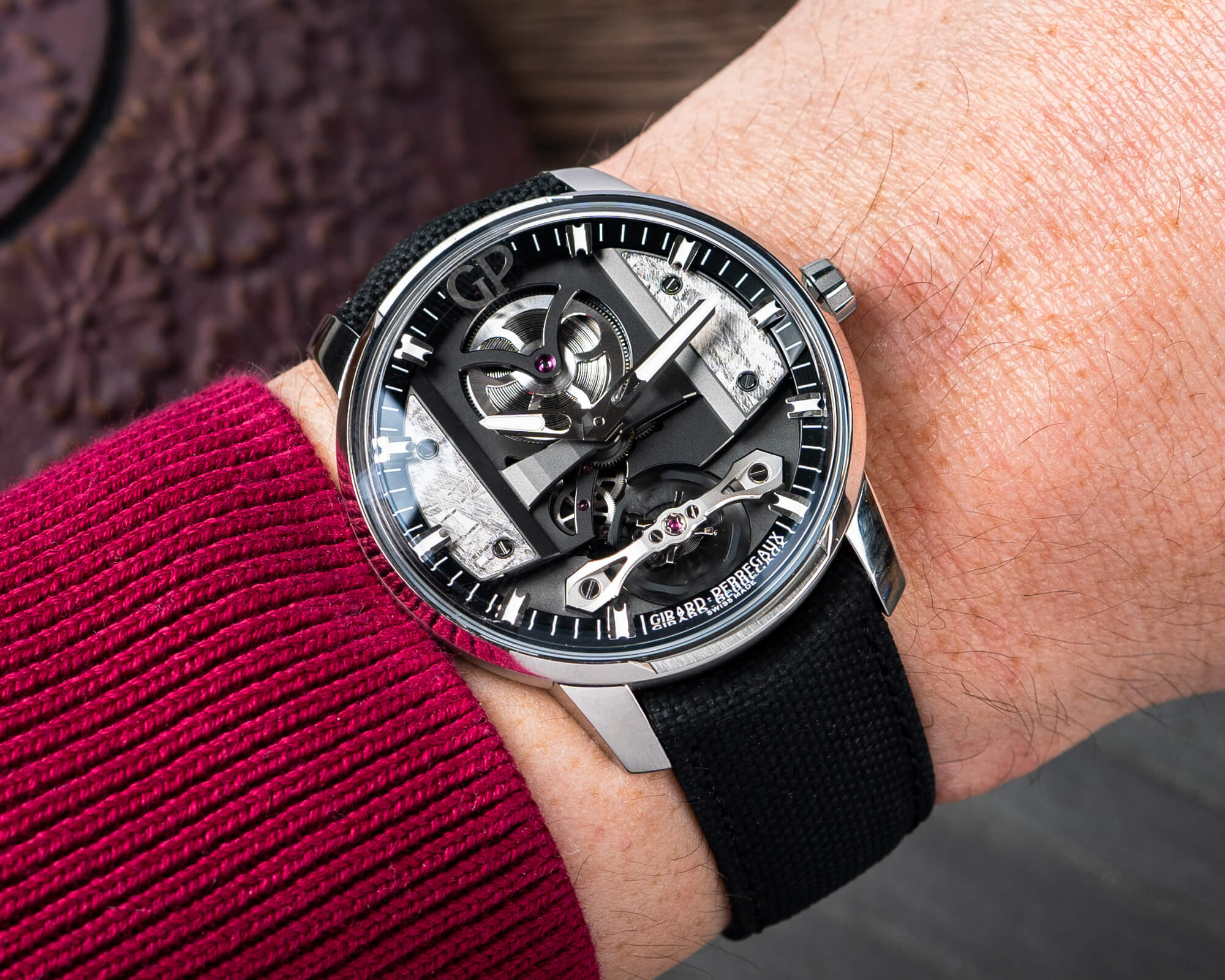
The new Girard-Perregaux Free Bridge Meteorite is the third in the Free Bridge line, having been preceded by the original Free Bridge and the Free Bridge Infinity Edition. The watches feature identical designs, with only minor tweaks between them. The original Free bridge features an identical case with a simpler, all-black dial/movement construction. The Free Bridge Infinity Edition features a black DLC case with gold accents for the indices, hands, and balance bridge. Instead of meteorite inserts on the hours bridge, the Infinity Edition gets shiny black onyx.
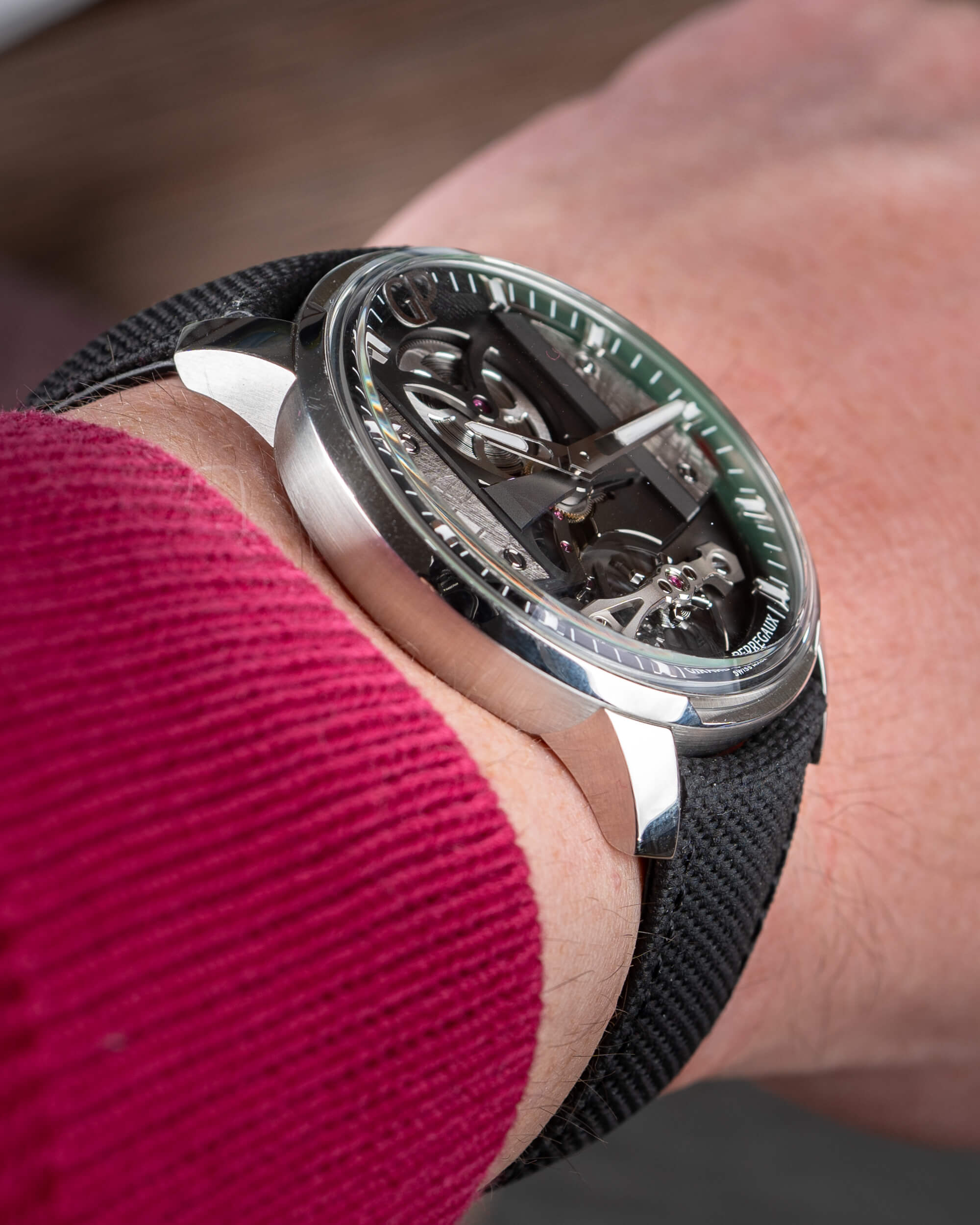
The Free Bridge Meteorite’s 44mm stainless steel case isn’t incredibly fancy, which is a smart move considering the complexity of the dial. Instead, it features a simple round shape with a polished bezel and lugs and horizontal brushing along the side. The lugs appear to be separate elements, attached to the case likely through internal screws, which is on par for a watch of this caliber. Despite being 44mm, the case wears incredibly well — I’d say closer to 42.5mm, to be honest. The curvature of the lugs combined with the 12.2mm thickness and 47mm lug-to-lug makes this possible, and I’m here for it. A lot of pieces with dramatic, layered dials end up quite thick, and that’s just not the case here. By any measure, 12.2mm is thin for a 44mm watch. The watch has 30 meters of water resistance (cue angry comments) and a crown with a novel grip design and dual finishing. One peculiar feature of the case is the bezel cutouts at 6 and 12, which see the sapphire crystal drop down to the midcase, affording a profile view of the dial. It’s a nice touch, but the window is small enough to make it impractical for enjoyment.
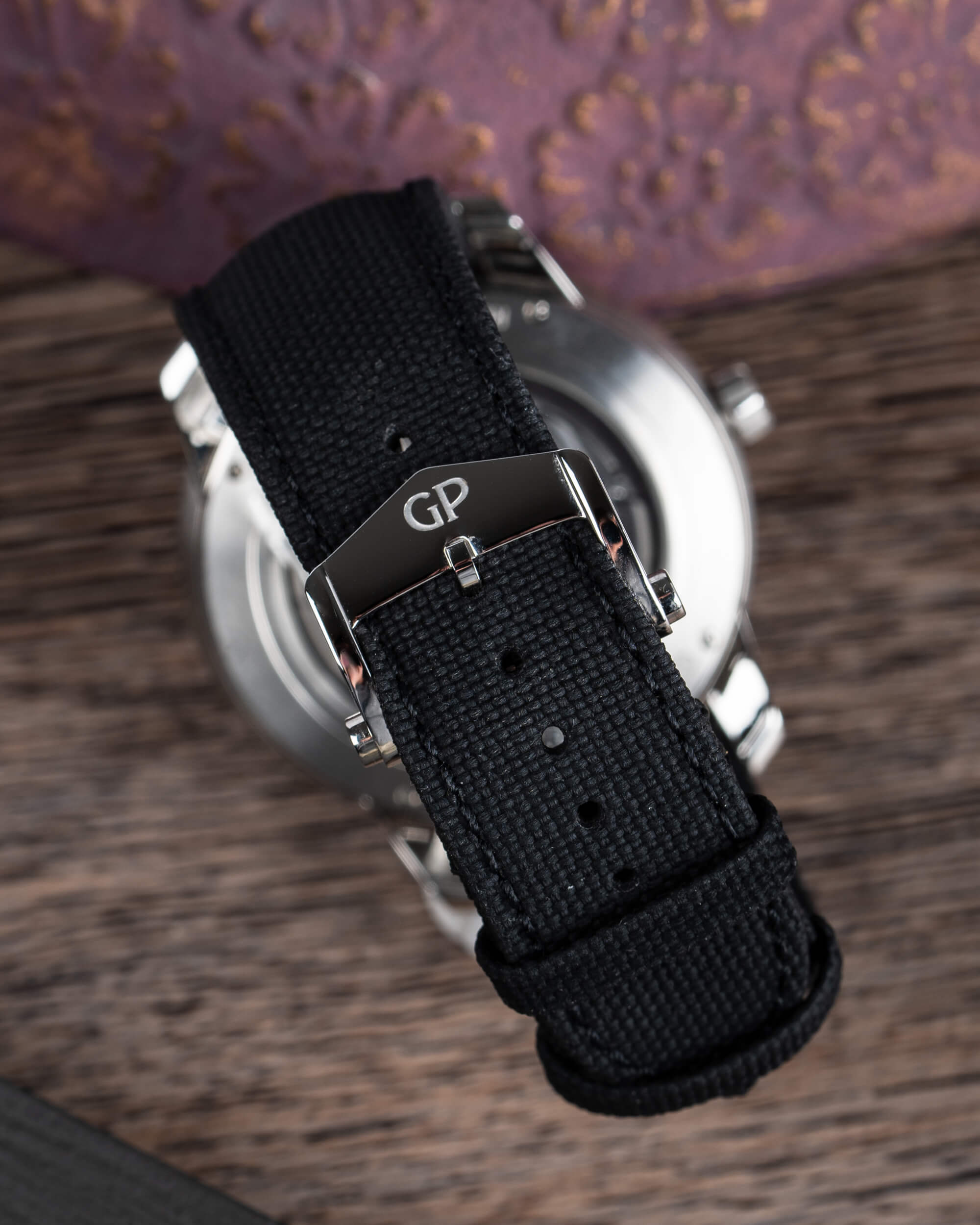
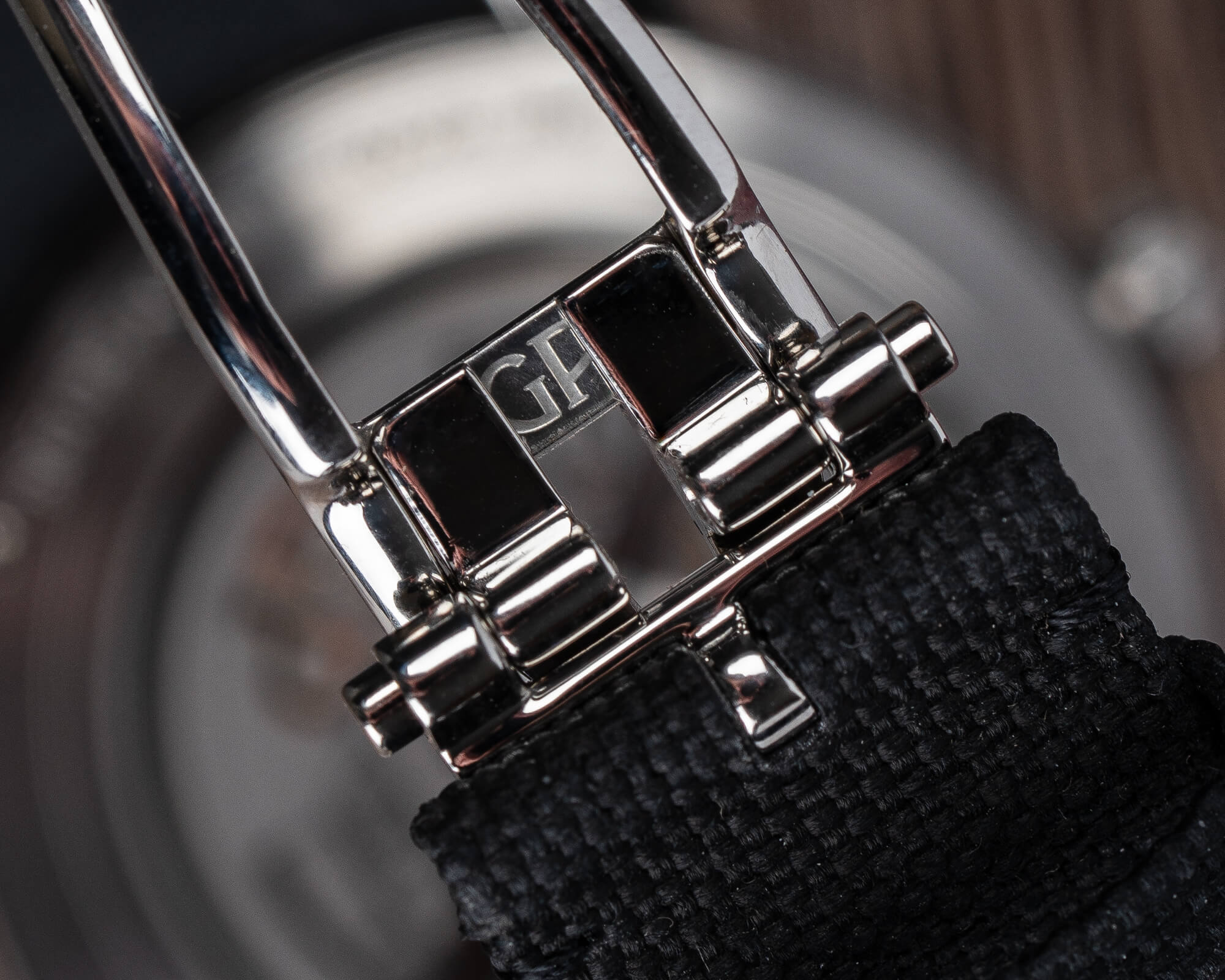
A word about the strap that comes with the Free Bridge. It looks and feels like a textile, but according to GP, it’s actually rubber with a fabric effect. I don’t know how this is done, but it’s not the first time I’ve seen it on a watch. Here, it’s convincing enough to engender confusion and suspicion, but ultimately I accepted the deception because the strap is comfortable. The closure on the strap takes some getting used to. It’s a double push-button, pin-buckle butterfly deployant clasp. “A what?” you ask. It folds on both ends, like a butterfly deployant and both ends have push-button releases. The larger clasp portion has a traditional pin buckle. To fasten it, you push the pin-buckle through the desired hole, lock the clasp peg into the next hole, and close. To unfasten, you do the opposite. It makes for an incredibly secure clasp that doesn’t add much bulk.
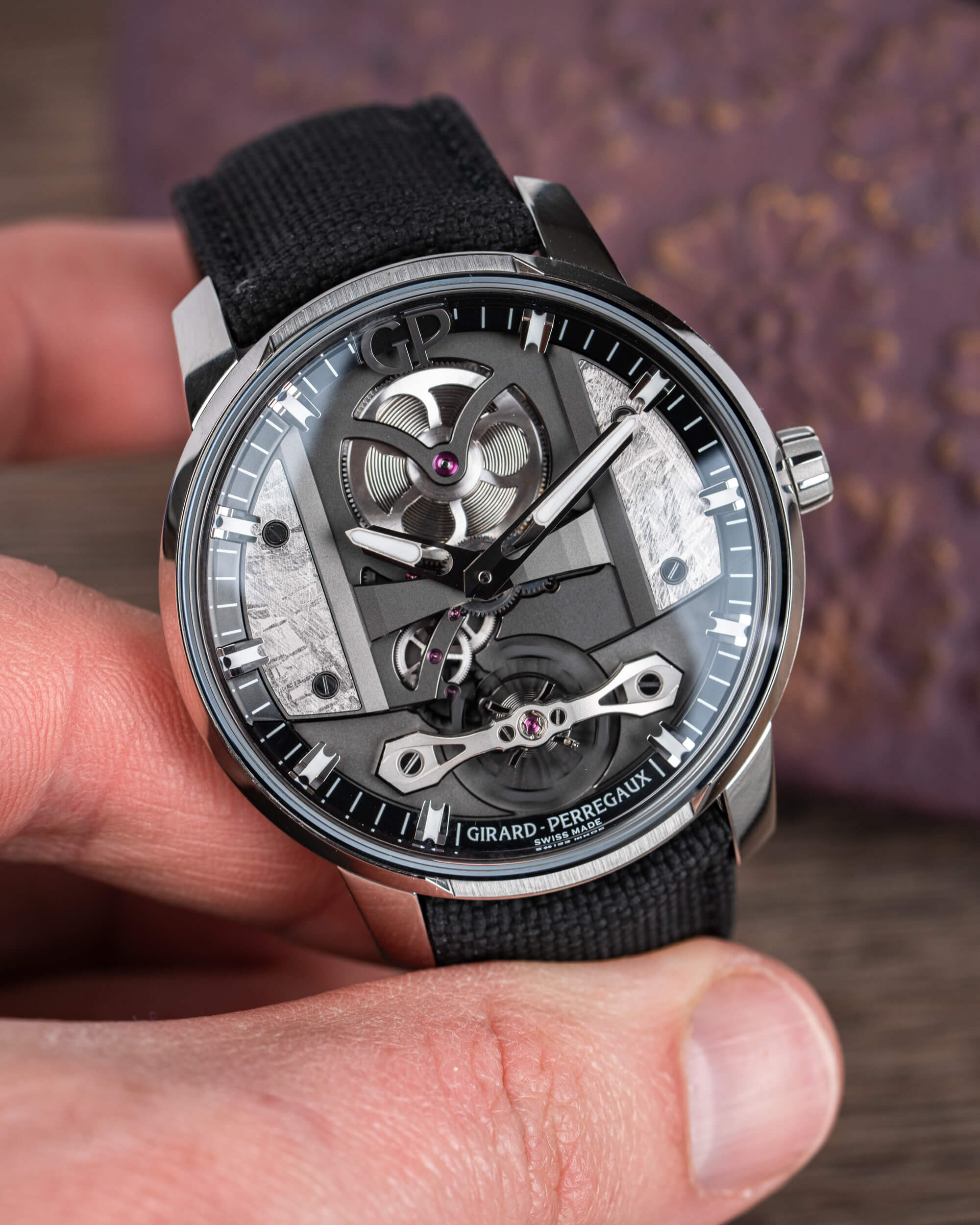
The dial of the Girard-Perregaux Free Bridge Meteorite puts the entire gear train — from barrel to balance — front and center for a dimensional visual that pleases every single time you look down to tell the time (or, as is likely the case, to ogle the dial without registering what time it is). From the mainspring barrel under a sweeping black bridge at 12 o’clock to the going train that snakes under the faceted arcing hour bridge, ending with the balance at 6 o’clock. Symmetry has become a hallmark of the Girard-Perregaux Bridges collection, and that’s continued here. While not part of the more iconic Three Bridges line, there are indeed three bridges here, with the eponymous “Free Bridge” being the bowtie balance bridge at 6 o’clock. On this edition, it’s left to its natural color and finished with a polished chamfer.
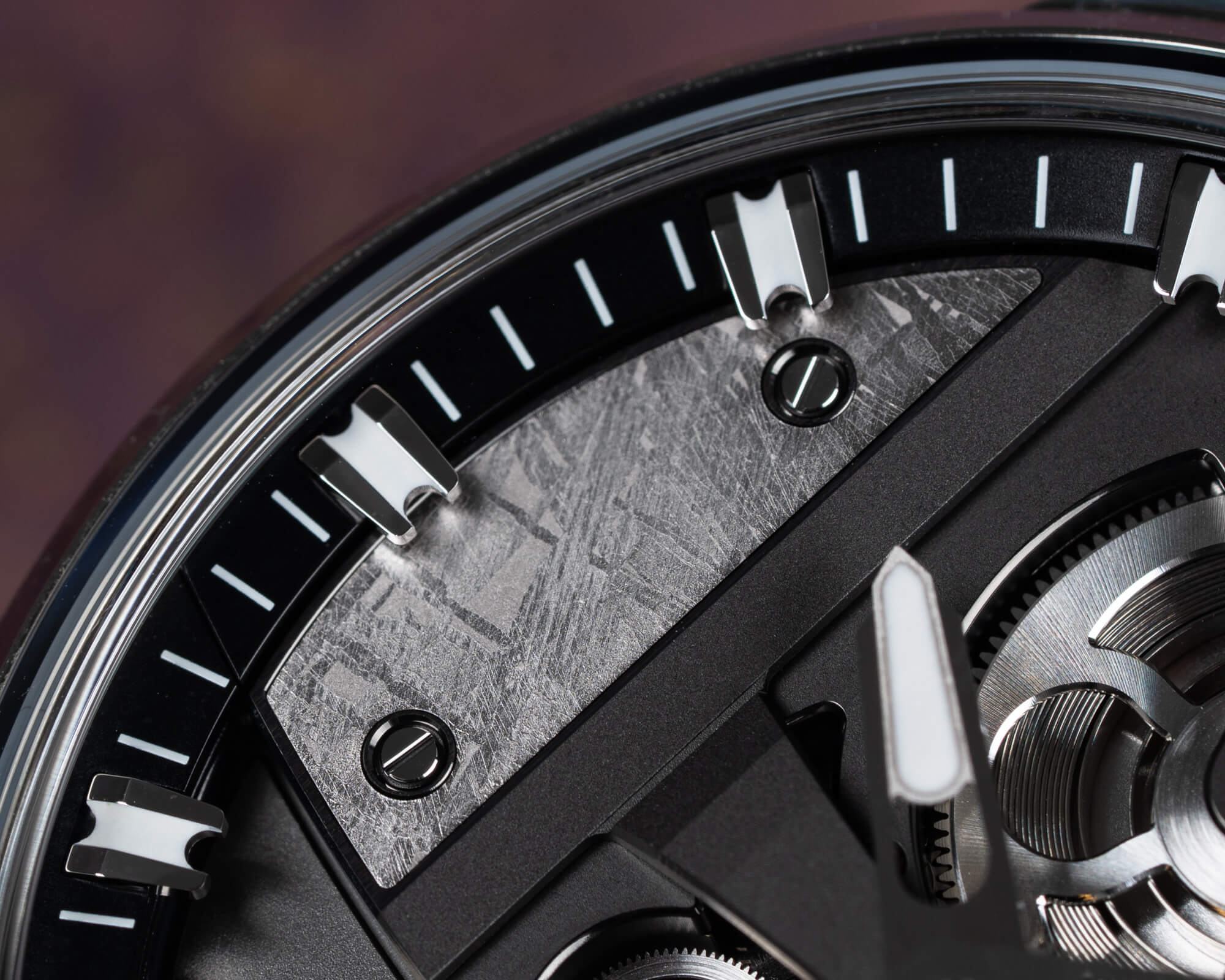
Alright, here’s where we talk about the meteorite. There are two slices of meteorite, both from the Gibeon meteorite in Namibia. (If the source of a watch’s meteorite is important to you, you’re either a geologist, space rock doctor, or you’ve lost your way.) They’re installed on either side of the dial, technically as part of the hour wheel bridge. It’s an incredibly lazy meteorite dial. Two tiny plates? Really? If you’re not making actual parts from meteorite (which I’m sure has its challenges but clearly isn’t impossible), why not put it everywhere? Every bridge should have meteorite or there should be none at all. Conversely, I’m also trying to think about this from a different angle, similar to old radium or vintage lume. Old radium lume shouldn’t be used to make a watch look old, but I do enjoy it as a design choice (like on the Formex Field). Considering the meteorite of the GP Free Bridge as a design choice rather than a “Behold! Space Things!” choice, I think it elevates the watch beyond the other two other Free Bridge models. To paraphrase The Big Leboswki, the meteorite really ties the dial together.
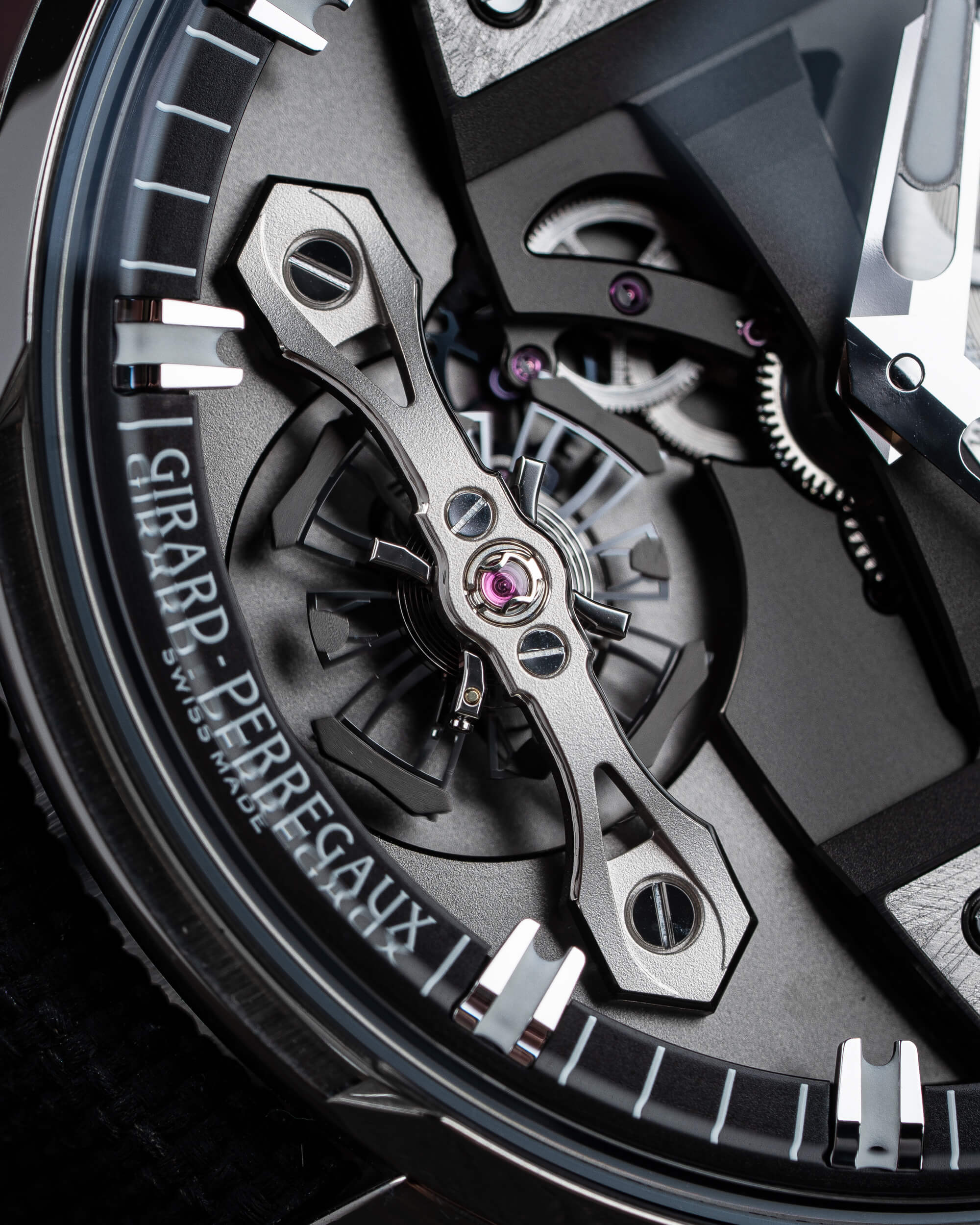
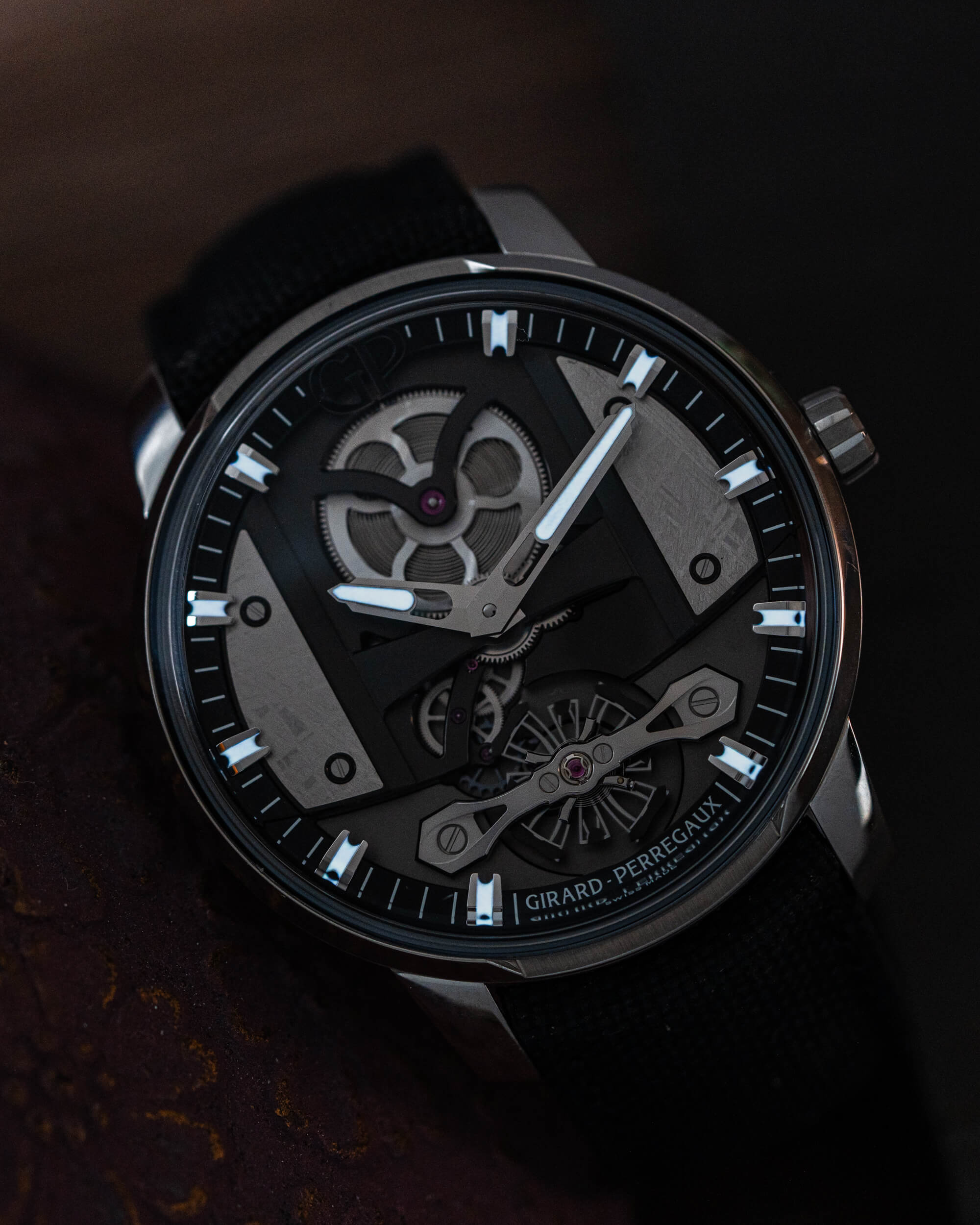
The rest of the dial does its job admirably. The floating chapter ring is fixed with polished applied indices, with a rhodium-plated GP logo at 12 o’clock. The dauphine hands feature cutouts and seem perfectly sized. Despite everything going on with the dial, I found legibility to be excellent, with the polished hands and indices contrasting well against the rest of the watch. Both the indices and the hands are filled with Super-LumiNova that gives off an almost eerie white glow. I’m so used to blue or green lume that the white lume took me off guard a bit. It’s a great look on the watch and keeps in line with the grey-scale aesthetic. But it’s oddly spooky, like the watch is haunted.
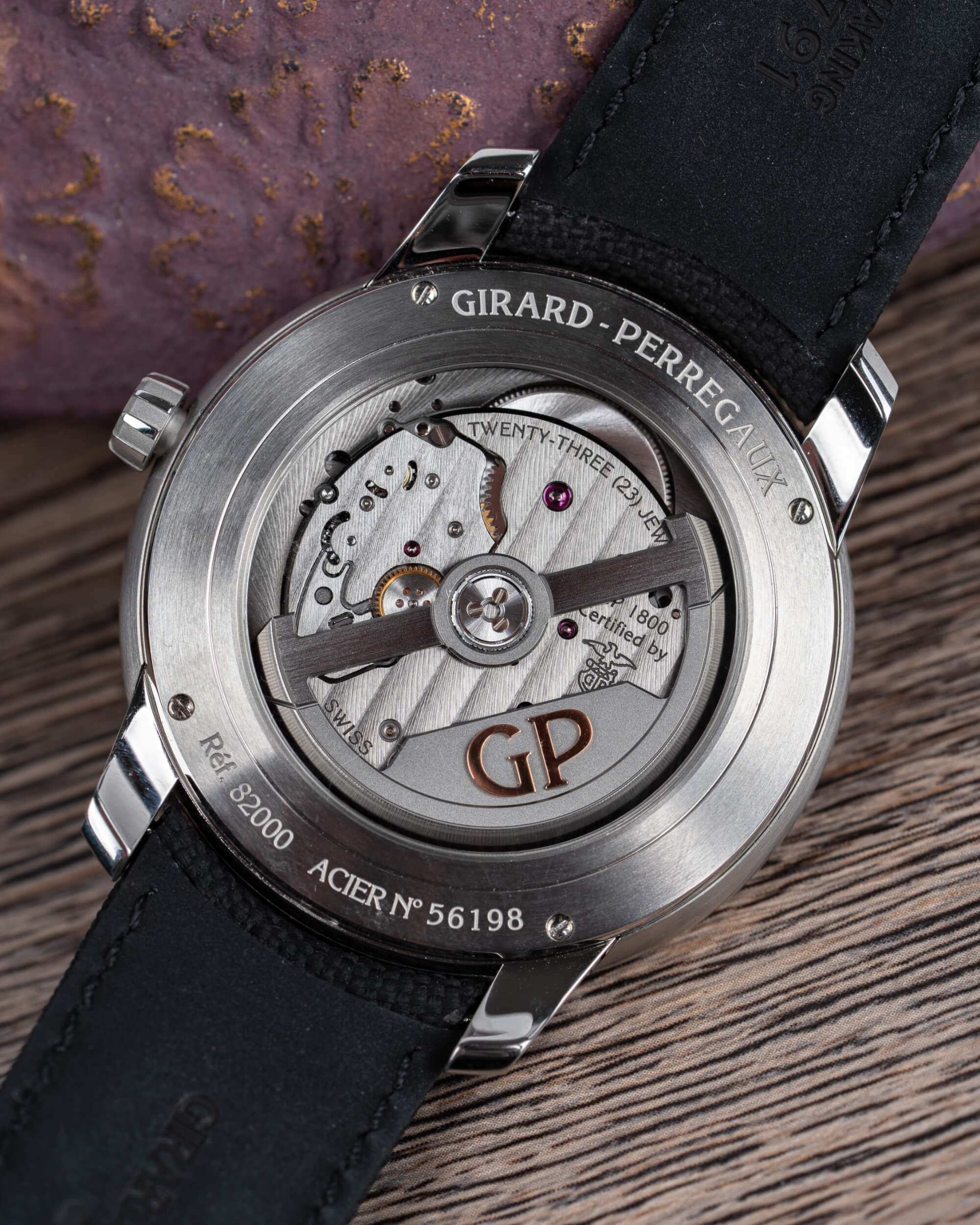
The GP Free Bridge Meteorite gives a double dose of movement delight. On the front, you’ve obviously got the movement-as-dial, where you can see the entire gear train, particularly the escapement and balance wheel. The escape wheel, pallet lever, and arms of the variable inertia balance are all constructed with silicium, which gives them a modern look and greater resistance to shocks, magnetism, corrosion, and wear and tear. On the reverse, you get a more traditional look at the in-house automatic GP01800-2085 movement, with Côtes de Genève, beveling and snailing as well as sandblasted finishing on the rotor, which features a gold GP logo. The movement delivers a minimum power reserve at 28,800 vph but lacks a hacking function (with no seconds hand, this is only an issue if you care to look at a stopped balance — or photograph one). While Girard-Perregaux doesn’t publish or provide accuracy standards for its movements, I’ve read that these and others consistently perform in the 4-6 seconds per day range.
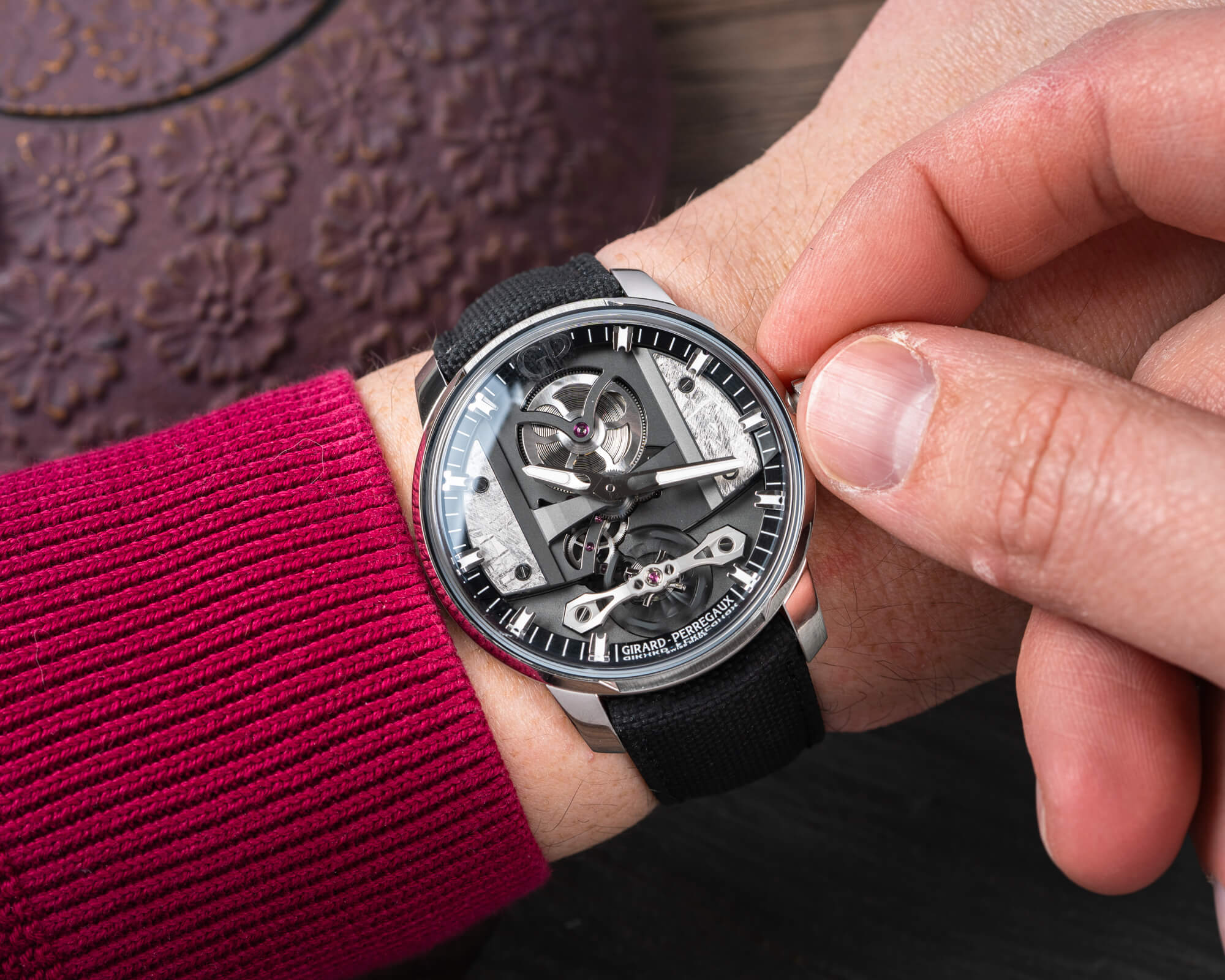
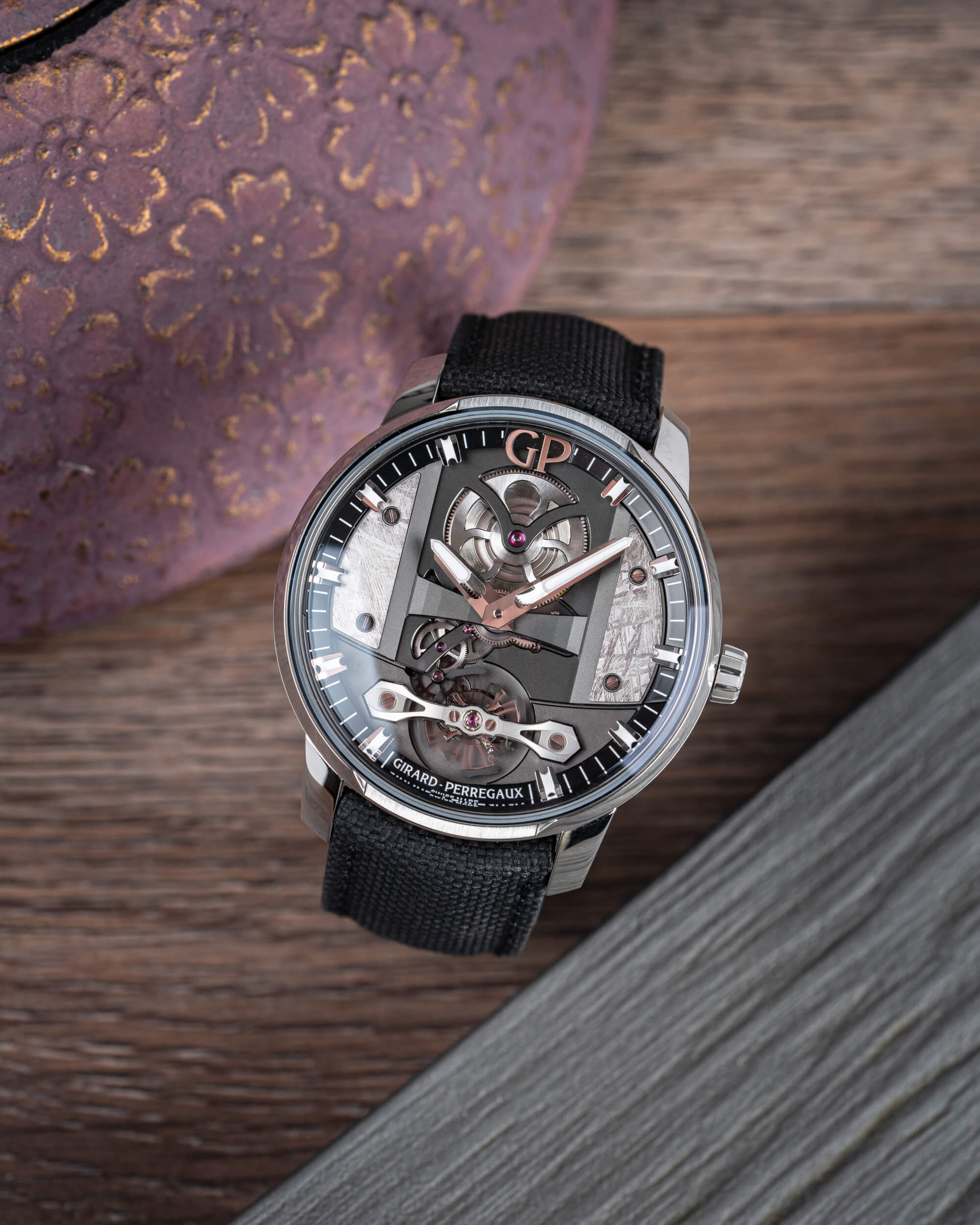
The Free Bridge Meteorite comes at a $5,100 premium over the standard Free Bridge, which is a lot for two slices of space rock. That said, I think this is the version of the Free Bridge to get, so I don’t consider it a premium; with the standard version, you pay less for a less exciting watch. Measured as a timepiece that integrates meteorite, the Free Bridge Meteorite may be one of the least exciting options available at any price point. Assessed more holistically, it’s a beautiful, dimensional timepiece that wears incredibly well and is elevated by the inclusion of the meteorite and its hallmark texture and tone. The Girard-Perregaux Free Bridge Meteorite is priced at $25,700 USD. For more information, please visit the Girard-Perregaux website.

